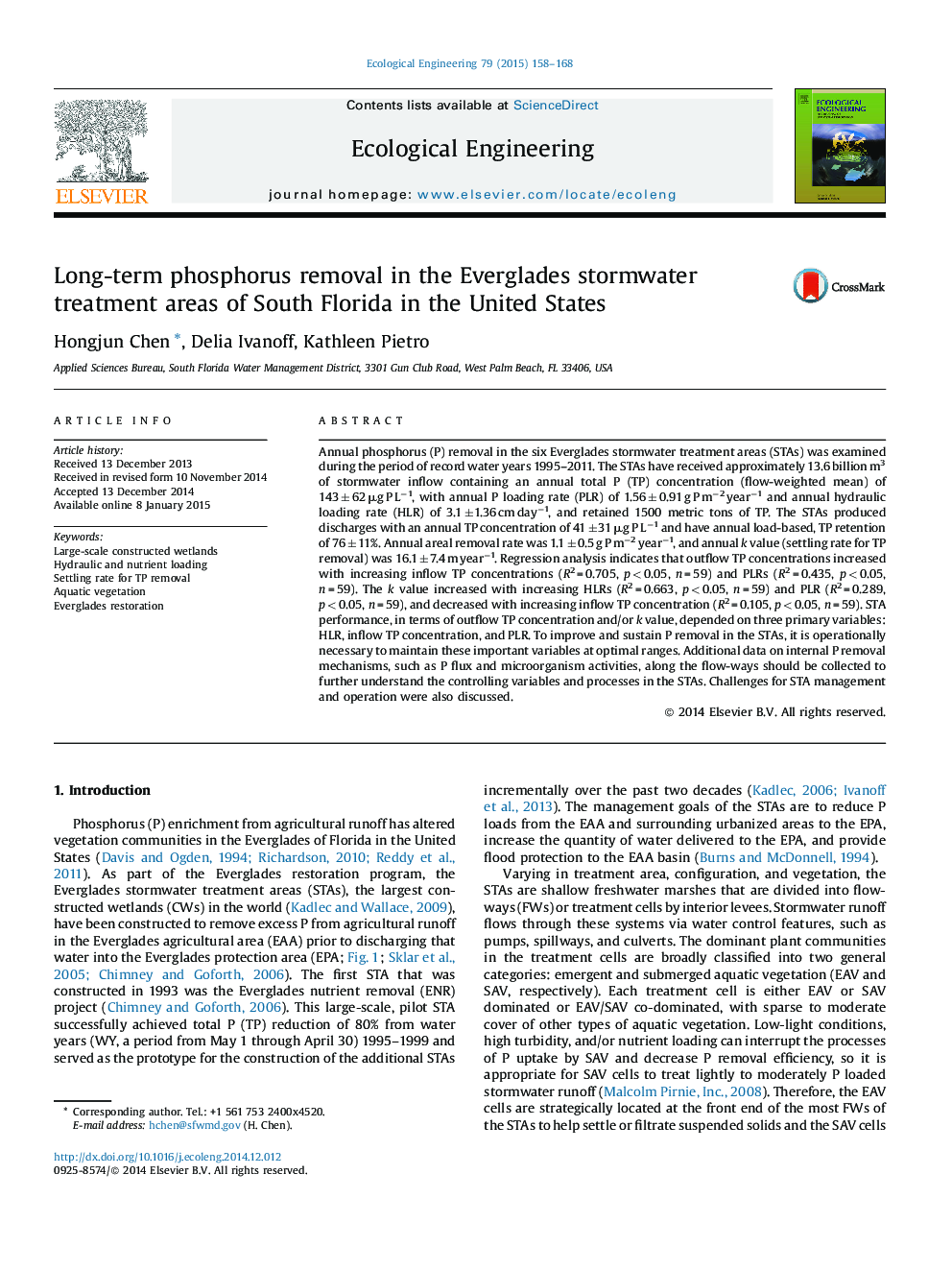| Article ID | Journal | Published Year | Pages | File Type |
|---|---|---|---|---|
| 4389129 | Ecological Engineering | 2015 | 11 Pages |
Annual phosphorus (P) removal in the six Everglades stormwater treatment areas (STAs) was examined during the period of record water years 1995–2011. The STAs have received approximately 13.6 billion m3 of stormwater inflow containing an annual total P (TP) concentration (flow-weighted mean) of 143 ± 62 μg P L−1, with annual P loading rate (PLR) of 1.56 ± 0.91 g P m−2 year−1 and annual hydraulic loading rate (HLR) of 3.1 ± 1.36 cm day−1, and retained 1500 metric tons of TP. The STAs produced discharges with an annual TP concentration of 41 ± 31 μg P L−1 and have annual load-based, TP retention of 76 ± 11%. Annual areal removal rate was 1.1 ± 0.5 g P m−2 year−1, and annual k value (settling rate for TP removal) was 16.1 ± 7.4 m year−1. Regression analysis indicates that outflow TP concentrations increased with increasing inflow TP concentrations (R2 = 0.705, p < 0.05, n = 59) and PLRs (R2 = 0.435, p < 0.05, n = 59). The k value increased with increasing HLRs (R2 = 0.663, p < 0.05, n = 59) and PLR (R2 = 0.289, p < 0.05, n = 59), and decreased with increasing inflow TP concentration (R2 = 0.105, p < 0.05, n = 59). STA performance, in terms of outflow TP concentration and/or k value, depended on three primary variables: HLR, inflow TP concentration, and PLR. To improve and sustain P removal in the STAs, it is operationally necessary to maintain these important variables at optimal ranges. Additional data on internal P removal mechanisms, such as P flux and microorganism activities, along the flow-ways should be collected to further understand the controlling variables and processes in the STAs. Challenges for STA management and operation were also discussed.
Graphical AbstractFigure optionsDownload full-size imageDownload as PowerPoint slide
